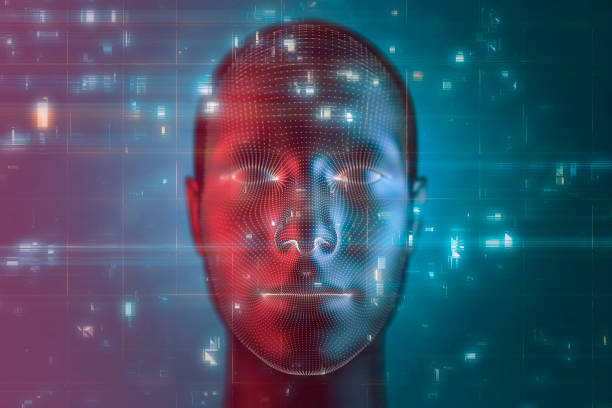In recent years, the rapid advancement of Artificial Intelligence (AI) has paved the way for innovative applications across various sectors. One of the most exciting developments in this trend is the rise of Machine Learning integrated within AI Operating Systems (AIOS). This article delves into the transformative impact of Distributed AI-based Systems and Cross-platform AIOS, outlining their industry applications and technical insights.
.
### Understanding AI Operating Systems
AI Operating Systems (AIOS) serve as a foundation for managing AI applications, providing an intelligent environment that leverages machine learning (ML) algorithms to enhance performance and user engagement. Unlike conventional operating systems, AIOS integrates AI at its core, harnessing data and continuous learning to improve decision-making processes.
.
The significance of AIOS lies in their ability to streamline user experiences, facilitate data management, and promote real-time analytics. The emergence of AIOS is reshaping how organizations utilize technology, offering more sophisticated solutions for complex problems.
.
### The Role of Machine Learning in AIOS
Machine Learning is a subset of AI focused on enabling systems to learn and improve from experience without explicit programming. When integrated into AIOS, ML enhances the software’s capacity to adapt to user behaviors and operational dynamics.
.
By incorporating various ML techniques—such as supervised learning, unsupervised learning, and reinforcement learning—AIOS can evolve and provide personalized experiences. For instance, personal assistants like Siri and Alexa utilize machine learning to analyze user patterns, leading to improved functionalities and increased user satisfaction.
.
### Distributed AI-based Systems: Bridging the Gap
Distributed AI-based Systems have emerged as a critical component of scaling AIOS solutions. These systems operate across multiple nodes (servers, devices, or applications) to distribute the workload, thereby enhancing computational efficiency and processing speed.
.
One of the significant advantages of distributed systems in AIOS is their ability to leverage vast amounts of data for training machine learning models. As organizations increasingly rely on big data, distributed AI allows them to process information faster and more effectively, ultimately leading to better model performance.
.
Moreover, distributed systems enhance fault tolerance, ensuring system resilience in the face of failures. For organizations that rely on continuous AI operations, this capability is invaluable.
.
### Trends in Machine Learning and AIOS Integration
1. **Increased Automation:** Machine Learning’s ability to automate repetitive tasks within AIOS is revolutionizing industries. From customer service chatbots to automated data processing systems, organizations are adopting ML-enhanced AIOS to improve operational efficiency.
2. **Enhanced Security:** Security remains a prime concern for businesses leveraging AIOS. Machine Learning models can detect anomalies and potential threats in real-time, fortifying cybersecurity measures and safeguarding sensitive information.
3. **Personalized User Experiences:** By utilizing data analytics and user behavior patterns, ML algorithms can create personalized experiences in applications powered by AIOS. From content recommendations on streaming services to tailored e-commerce experiences, the potential for consumer engagement is vast.
4. **Interoperability Across Platforms:** As demand for cross-platform functionalities grows, AIOS can ensure seamless operation within varied ecosystems. The integration of machine learning fosters adaptability, allowing applications to function across different devices and operating systems.
.
### Technical Insights: Building Intelligent AI Operating Systems
Creating efficient AIOS requires a multifaceted approach combining several components:
1. **Data Infrastructure:** A robust data architecture is vital to support extensive machine learning processes. Organizations must invest in cloud storage solutions and data pipelines capable of handling large datasets efficiently.
2. **Frameworks and Algorithms:** Developers must explore various ML frameworks, such as TensorFlow, PyTorch, and Keras. Selecting the right algorithms for specific applications allows for optimized performance and enhanced reliability.
3. **Scalability and Load Balancing:** As demand for AI applications grows, ensuring scalable architecture and load balancing is essential. This helps accommodate increased workloads while maintaining system stability.
4. **Collaborative Development:** The collaborative nature of distributed systems allows interdisciplinary teams to contribute effectively. Data scientists, software engineers, and domain experts must work in tandem to create sophisticated and reliable AIOS.
.
### Industry Applications of Machine Learning in AIOS
1. **Healthcare:** Machine Learning integrated AIOS are transforming healthcare by providing predictive analytics, diagnostics, and personalized medicine. Algorithms can analyze patient data to predict health issues and recommend preventative measures.
2. **Finance:** Financial institutions are adopting ML-powered AIOS to enhance fraud detection processes, perform risk assessments, and deliver personalized financial services.
3. **Manufacturing:** Smart factories utilize AIOS combined with machine learning to optimize production processes, reduce waste, and predict maintenance needs, leading to overall efficiency.
4. **Retail:** AIOS applications in retail enhance inventory management, optimize supply chain logistics, and improve customer experience through personalized marketing and sales strategies.
.
### Cross-Platform AIOS: Driving Innovation
Cross-platform compatibility is increasingly critical as businesses look to reach larger audiences across various devices. Machine Learning capabilities integrated into AIOS can ensure that applications perform seamlessly on multiple platforms.
.
By adopting cross-platform approaches, organizations can develop applications once and deploy them across multiple operating systems. This flexibility reduces development time and costs while maintaining consistency and reliability of the user experience.
.
Tools like React Native and Flutter are becoming popular solutions for building cross-platform applications, enabling developers to leverage machine learning models within their frameworks effortlessly.
.
### Conclusion: The Road Ahead for AIOS and Machine Learning
The intersection of Machine Learning and AI Operating Systems is a rapidly evolving domain, with tremendous potential to reshape industries and enhance user experiences. Distributed AI-based systems, combined with cross-platform capabilities, are at the forefront of this technological revolution.
.
As organizations continue to harness these innovations, the challenges of building resilient, scalable, and intelligent AIOS will persist. Ongoing research and collaboration among industry stakeholders will undoubtedly play a crucial role in overcoming these challenges.
.
In the years ahead, the strategic implementation of machine learning in AIOS will significantly impact productivity, efficiency, and innovation across various sectors. The future is ripe for exploration in this dynamic landscape—an opportunity for businesses to lead with intelligence and foresight.
.
### Sources
1. “Machine Learning: A Guide to the Future of AI,” AI Journal.
2. “Distributed AI-based Systems: A Literature Review,” IEEE.
3. “Cross-Platform Development: Trends & Innovations,” TechCrunch.
4. “The Role of AI in Healthcare,” Healthcare IT News.
5. “Financial Services: The Impact of Machine Learning,” Harvard Business Review.





















